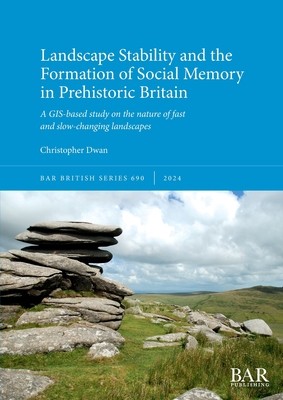
- We will send in 10–14 business days.
- Author: Christopher Dwan
- Publisher: British Archaeological Reports (Oxford) Ltd
- ISBN-10: 1407361775
- ISBN-13: 9781407361772
- Format: 21 x 29.7 x 1.1 cm, minkšti viršeliai
- Language: English
- SAVE -10% with code: EXTRA
Landscape Stability and the Formation of Social Memory in Prehistoric Britain (e-book) (used book) | bookbook.eu
Reviews
Description
People know places through inhabiting their textures and contours and relating places in space and time. Historically significant places come into being through inhabitation, and the world becomes sedimented with memories. These memories may be manifest within and referenced by materials.
Prehistorians often interpret the creation and maintenance of social memory in evidence of long-term continuities of inhabitation and the veneration of ancient structures and the people who built and inhabited them. This study focuses on GIS methods in landscape archaeology, using case studies from Bodmin Moor and the Somerset Levels in southwestern Britain. By treating the landscape as an active participant in the processes of memory-making the book asks how a landscape's rate of change will affect the maintenance of memories across short and long timescales.
EXTRA 10 % discount with code: EXTRA
The promotion ends in 23d.19:58:33
The discount code is valid when purchasing from 10 €. Discounts do not stack.
- Author: Christopher Dwan
- Publisher: British Archaeological Reports (Oxford) Ltd
- ISBN-10: 1407361775
- ISBN-13: 9781407361772
- Format: 21 x 29.7 x 1.1 cm, minkšti viršeliai
- Language: English English
People know places through inhabiting their textures and contours and relating places in space and time. Historically significant places come into being through inhabitation, and the world becomes sedimented with memories. These memories may be manifest within and referenced by materials.
Prehistorians often interpret the creation and maintenance of social memory in evidence of long-term continuities of inhabitation and the veneration of ancient structures and the people who built and inhabited them. This study focuses on GIS methods in landscape archaeology, using case studies from Bodmin Moor and the Somerset Levels in southwestern Britain. By treating the landscape as an active participant in the processes of memory-making the book asks how a landscape's rate of change will affect the maintenance of memories across short and long timescales.


Reviews